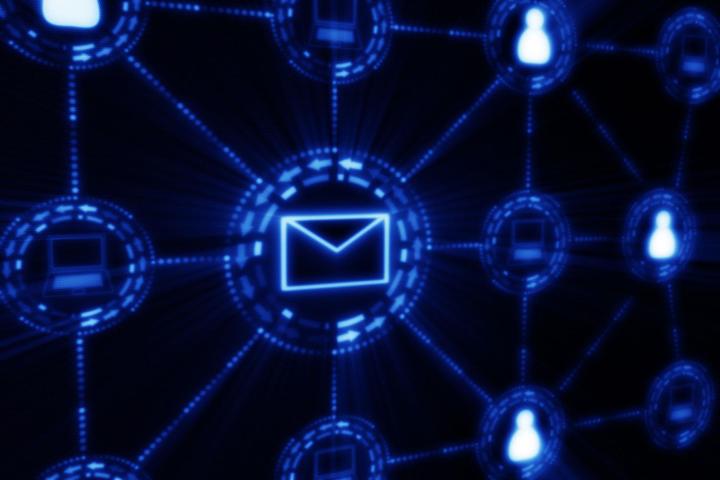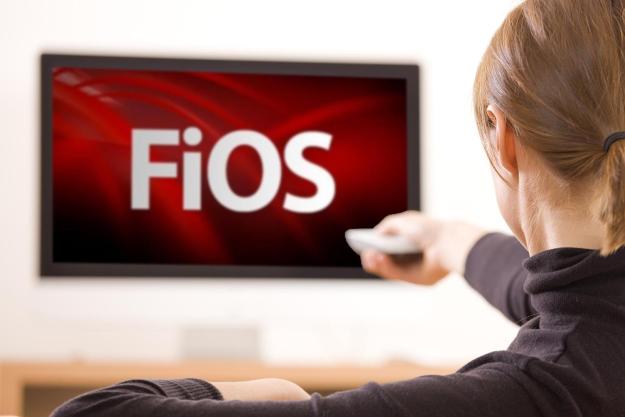
Email is the most ubiquitous method of communication on the Internet – maybe even on the planet. It’s built into almost everything, from phones and tablets to traditional computers to gaming devices – heck, even connected home appliances and cars can do email. More importantly, being “on the Internet” means having an email address (or dozens of them); they’re our IDs, how we sign up for things, how we receive notices, and sometimes even communicate with each other. Email is the original “killer app.”
But email was not designed with any privacy or security in mind. There have been many efforts to make email more secure, but the recent shutdown of highly-touted secure email services like Lavabit (reportedly used by NSA leaker Edward Snowden) and Silent Circle in the wake of government surveillance programs highlight the difficulties. Lack of email security is also having some surprising collateral damage, like the announced shutdown of the respected software and law blog GrokLaw.
Is email security hopeless? Are we looking at the end of the Internet’s killer app?
Why isn’t email secure?
Email isn’t secure because it was never meant to be the center of our digital lives. It was developed when the Internet was a much smaller place to standardize simple store-and-forward messaging between people using different kinds of computers. Email was all transferred completely in the open – everything was readable by anyone who could watch network traffic or access accounts (originally not even passwords were encrypted). Amazingly, email sent using those wide-open methods still (mostly) works.
Today, there are four basic places where most people’s email can be compromised:
- On your device(s)
- On the networks
- On the server(s)
- On your recipient’s device(s)
The first and last places – devices – are easy to understand. If someone can sit at your computer, grab your phone, or swipe through your tablet, odds are that your email is sitting right there for them to read – You do use a lock screen or password on your devices, right? Same thing goes for your recipients’ devices. But even passwords and lock screens sometimes aren’t much help. While a few email programs encrypt the email messages they store on the device, most don’t. That means anyone (or any program) that can access the device’s internal storage can probably also read email and get to file attachments. Sound far-fetched? It doesn’t have to be a person; rifling through email is one of the most common things malware does.
Networks are a little tougher to understand, and covers three basic links:
- Your connection to your email provider (whether that be your ISP, Google, Outlook, Yahoo, Apple, or someone else)
- Any network connections between your email provider and your recipient
- Your recipient’s networking connection to their email provider.
If you’re sending email to someone on the same service you use (say, Outlook.com), you have at least the first and third potential network vulnerabilities: your connection to Outlook.com and your recipient’s connection to Outlook.com. If your recipient’s email is elsewhere (say a company or school) then you have at least one more: the connection between Outlook.com and your recipient’s email provider. The reality of network topography means each of those connections involves a series of routers and switches (perhaps a dozen or more), probably owned and operated by different outfits. If one connection is secure, there’s no guaranteeing any other connection in the sequence is secure. And if you’re concerned about things like the NSA’s PRISM surveillance program, indications so far are that some of it happens at these interim network points.
Email was not designed with any privacy or security in mind.
Servers are the machines at your email provider or ISP that physically store your email. If someone cracks (or guesses, or steals) your email password, they probably don’t need your devices; they can log in to your email provider directly and read any email stored there. That might be only a few messages, but it could be weeks, months, or years worth of email – including at least some messages you’ve deleted. But that’s not the only risk. Most email services store your messages as plain text. So, any attacker who can access those servers (say, via a security flaw or by stealing an admin password) can easily access all the stored email and attachments. Why don’t providers protect stored email? Partly because of the overhead that would create, but storing the email unencrypted lets people search their messages (you like to search your email, right?) and enables services like Gmail to automatically scan mail for keywords to sell advertising (and you like advertising, right?).
Encryption to the rescue!
The best way to protect communications is to encrypt them: basically, scrambling the data with complex mathematical transformations so it’s only intelligible using the correct password or other credentials. A common form of encryption is public key cryptography, where people (or ISPs or companies) give away a public key that anyone can use to scramble data intended for them, but can only be decoded using a private key that the person (or ISP or company) keeps secret.
Public key cryptography is the basis of two primary ways to protect email:
- Encrypting messages
- Encrypting network connections
Encrypting messages
The idea behind encrypted messages is straightforward: instead of sending plain text anyone can read, you send scrambled gobbledegook only the intended recipient can read. Common tools for encrypting email include PGP (now a commercial product from Symantec) and numerous mainstream apps and tools that support the open source OpenGPG and S/MIME.
Encrypting messages is a straightforward idea, but the approach has pros and cons. On the positive side, encrypted messages are protected across both networks and servers, even if they’re compromised or store messages as plain text. (The gobbledegook could make Gmail serve up some weird ads, though!) The message is probably also encrypted on your device and your recipient’s devices (until they decode it), which offers some additional protection. That’s all good.

Now the downsides. Encrypting individual messages is a pain. You have to have the public key of everyone you want to communicate with securely. For one or two people, that’s not bad, but most people have dozens (or hundreds) of contacts. Getting all of them up and running with public key cryptography won’t be easy.
Further, everyone who wants to send you secure email needs your public key! You can send it to them via email … but that won’t be encrypted so it’s not secure. Same with a blog post or a Facebook page or keyserver services or any other insecure channel. The only really safe way to exchange public keys is face-to-face or some other way you can be truly sure you’re getting the right key from the right person. That can be wildly impractical. Some folks who send you sensitive email – like banks, credit card companies, hospitals, schools, or the local fertility clinic – probably won’t (or won’t know how) to use your public key even if they had it. Bottom line, not many of your email messages are going to be encrypted, so encrypting messages isn’t a general solution for secure email.
But wait! There are more downsides to encrypting messages. Only the message contents (and attachments, if any) are scrambled. The header information (including your address, the recipient’s address, subject, date, and more) are all still plain text anyone can read. That information might just be metadata, but over time it can paint a surprisingly detailed picture of your online activities. (Just ask the NSA!) Want another downside? Try logging into your webmail and searching through encrypted mail for a phone number or address.
Encrypting connections
Hassles with encrypted messages mean much of the focus on securing email has been on encrypting network connections. The basic idea is the same as using a secure Web site like your bank or Amazon.com. When you connect to your email provider, your software uses Transport Layer Security (TLS, still better known as SSL) to encrypt the connection between your device and the service. It even takes care of exchanging keys: most devices today come pre-installed with keys for certificate authorities, where they can download authenticated keys for sites and services without bothering users: no muss, no fuss, no flying to Australia to exchange public keys with someone. The basic technology has worked for ecommerce for almost two decades.
That information might just be metadata, but over time it can paint a surprisingly detailed picture of your online activities.
Encrypting the connection between you and your email provider means no one on the network in between can view email messages you send or receive: it’s all gobbledegook. That protects you from the creep on the local Wi-Fi network and even secret government taps in a data center somewhere along the way.
However, once the message reaches your email provider, all bets are off. Most of the time, your email provider stores the message data as plain text (see above), although there are exceptions like Canada’s Hushmail. And if your recipient is on another email provider or ISP, your message could be (and probably is!) transmitted to them over the Internet as old-school plain text email. A growing number of email services are using TLS to encrypt connections between themselves, but the vast majority of email servers in the world still exchange messages with no encryption – and there’s no way for you to know. Furthermore, there’s no telling whether your recipient will use a protected connection to receive or reply to your email. You might have protected yourself from the creep on the public Wi-Fi network, but did your doctor or accountant? Maybe not.
Is email doomed?
Email won’t go away anytime soon. It’s far too useful, and it’s near-universal status on almost every device and service ensures email will be with us for many years.
But secure email? The bottom line is that email as we know it today has never been secure, and the myriad ways we send, receive, store, and use email messages makes fully securing email a very difficult problem. At best.
We can invent new secure message services that could replace email. That’s what Silent Circle has done with its encrypted communications service, and arguably that’s what BlackBerry did with BBM and what Apple may have done with iMessage. Nonetheless, these services are subject to disclosure requests from governments – although Silent Circle takes the interesting step of being able to respond with almost nothing. More importantly, none are likely have the broad ubiquity and almost omnipresent reach of email at any point in the medium or even the long term. Hopefully, the difficulty won’t stop people from trying – and Kim Dotcom’s Mega is already throwing its hat in the ring.
But, for the foreseeable future, Internet users cannot expect email to be secure from prying eyes or interception. Period.
Top image courtesy of Shutterstock/3dreams



